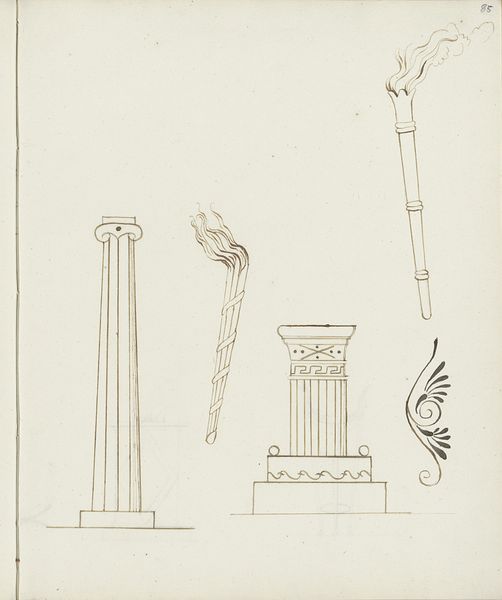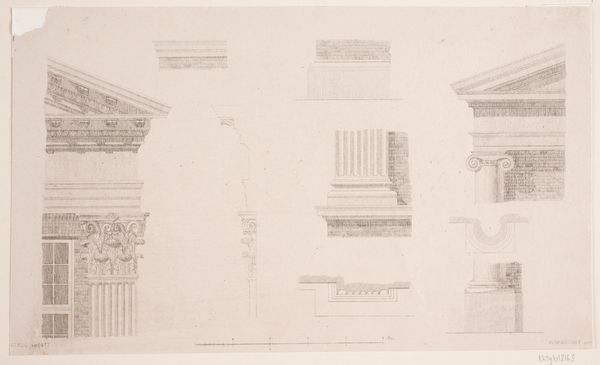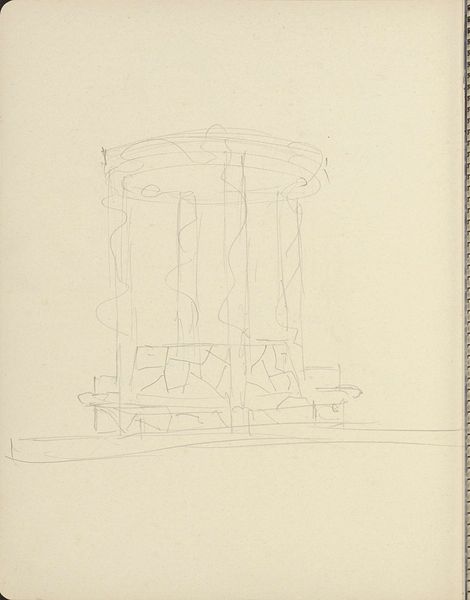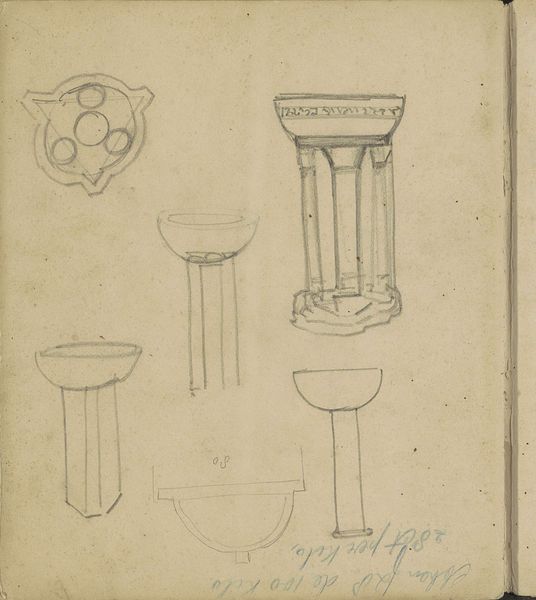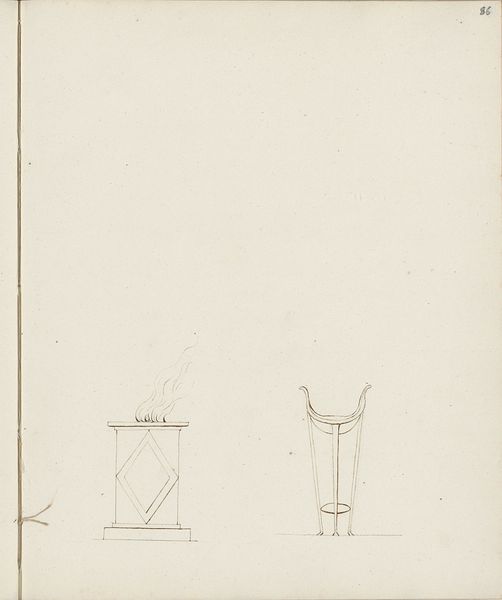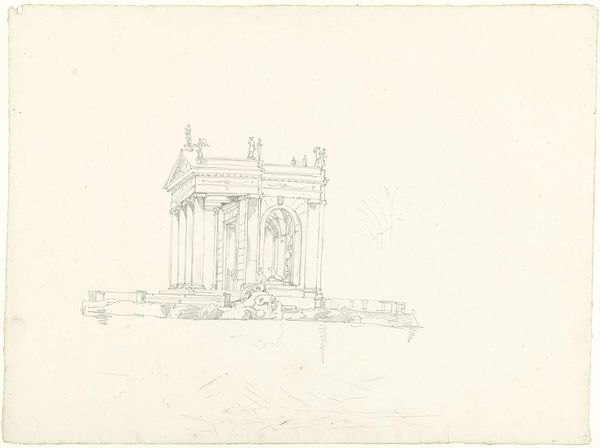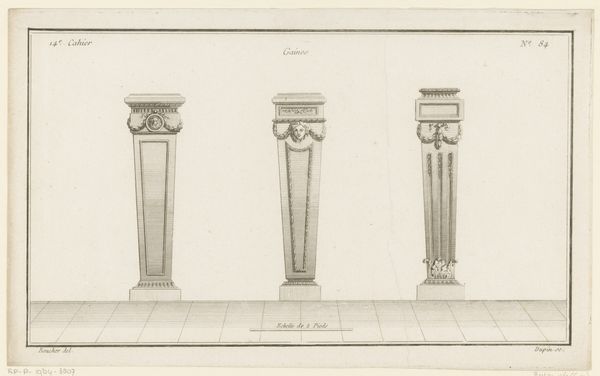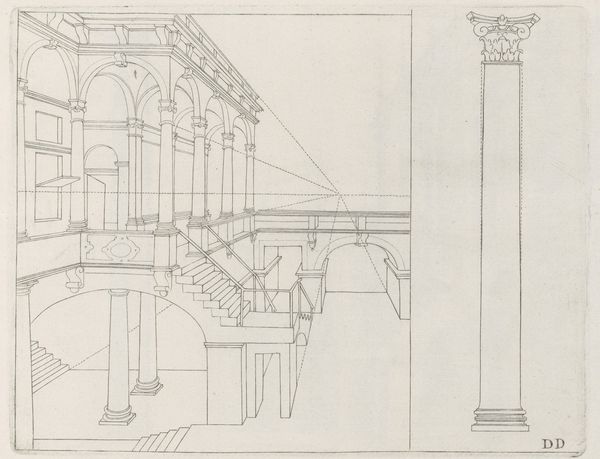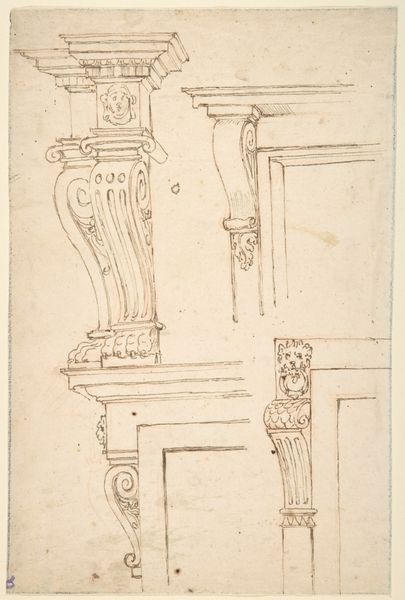
drawing, pencil
#
drawing
#
neoclacissism
#
etching
#
form
#
geometric
#
ancient-mediterranean
#
column
#
pencil
#
line
#
sketchbook drawing
Copyright: Rijks Museum: Open Domain
This sketch by Catharina Kemper presents us with potent symbols of classical antiquity: Ionic columns, Greek altars, and burning torches. These are not merely architectural elements; they are carriers of profound cultural memory. Observe the torch, a motif that transcends time. In ancient Greece, the torch signified enlightenment, life, and hope. Recall the relay races, where the flame passed from runner to runner, embodying the continuity of tradition and the transmission of knowledge. The torch's flame is not static; it flickers and dances, a symbol of vitality and the ever-changing nature of existence. We see it later in the Roman era as a symbol of triumph. Consider how these symbols tap into our collective unconscious, evoking a longing for the ideals of antiquity—wisdom, beauty, and civic virtue. The symbolic weight of the Greek altar, which also appears in this sketch, and the Ionic column lies not only in their original contexts but also in their subsequent revivals and re-imaginings. The flame, passed from hand to hand, era to era, continues to illuminate our path, guiding us through the labyrinth of history.
Comments
No comments
Be the first to comment and join the conversation on the ultimate creative platform.
